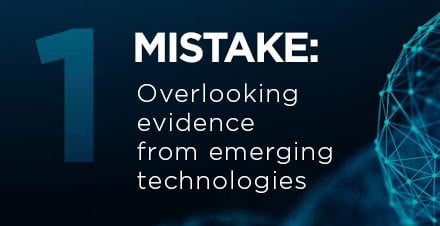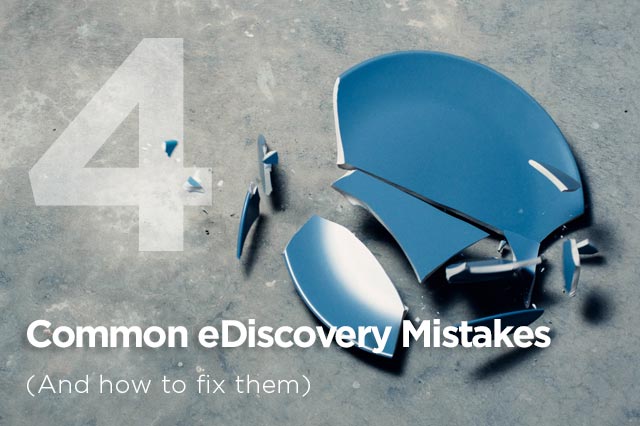Even for the most seasoned legal professional, the eDiscovery process can be a minefield. Knowing what errors to be mindful of can be the difference between a smooth and watertight litigation procedure, or costly sanctions.
While we all know the importance of eDiscovery, due to a number of factors it is often something that many legal professionals – though most probably wouldn’t admit it aloud – have to pick up and learn on the fly.
With the regulatory landscape surrounding the eDiscovery process in a state of constant flux, finding the time to get your head around the ins and outs of it is a daunting prospect to say the least – even for someone without a dense workload.
Read on to find out four of the most common mistakes that legal professionals make during eDiscovery, and how they can be avoided to ensure your resources and reputation can remain at their best.

1. Overlooking evidence from emerging technologies
As digital technology continues to be reinvented and transformed, so too does the abundance of forms in which evidence can present itself.
New apps, social media channels and instant messaging platforms are emerging every day, meaning the landscape for data storage is constantly expanding into new territory.
As such, it is vital that those heading up eDiscovery processes stay abreast of emerging digital technologies, as well as how they are commonly used by the public at large.
Depending on the case or dispute at hand, anything from WhatsApps to Snapchats may be considered relevant evidence, and could lead to spoliation sanctions if not appropriately accounted for and preserved.
2. Poor communication between IT and Legal
It is rare that an eDiscovery review process won’t require some degree of cooperation between legal and IT departments.
But with these disciplines often representing polar opposites in terms of culture, working processes and internal language, communication problems between these two teams are an age-old hindrance to the eDiscovery process. And yet, it is one that all too often remains unaddressed.
Achieving pain-free collaboration between IT and legal is a two-way street. Legalese and technical jargon are both roadblocks to effective teamwork in their own right, so ensuring everyone is speaking the same language should be the first priority.
An atmosphere of exclusion or isolation will likely lead to tasks being treated like box-ticking exercises, rather than two equally invested parties striving for a mutual goal. Lack of investment or engagement either side if also what can lead to damaging oversights.
Communication between departments needs to be frequent and proactive on both sides.
Top-down organisational support (usually from the General Counsel and CIO) is crucial to driving all of the above.





